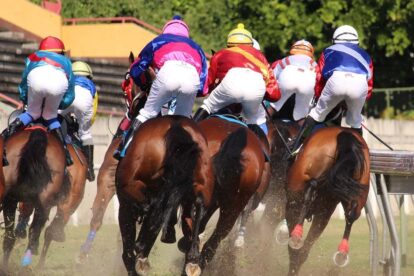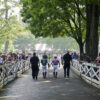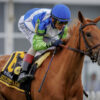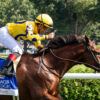Racing is getting back underway in France, and some big meetings are set to go ahead in the UK at the end of the month. There’s no doubt about it, finally, we can see a light at the end of the tunnel after a bizarre and frightening start to the year.
We are all looking forward to life returning to normal. It’s been a long time since we’ve been able to study the form and enjoy the drama of the track. While distractions such as the Virtual Grand National have been fun in their own way, they have proved that for those who love betting on horse racing, there is no substitute for the real thing.
However, it would be overly optimistic to think that a return to racing means a return to business as usual. As the world emerges from lockdown, it is creating what many are calling a “new normal” of changes and restrictions that could linger for months, or even longer. Here are some of the changes that are being mooted.
Behind Closed Doors
The mid-May return to action at Paris Longchamp has come with the significant caveat that it will take place behind closed doors. While it will be a strange environment for the runners and riders, the eyes of the world will be on the action through extensive TV coverage – after all, in Europe especially, there will still be almost nothing else for the sports media to cover.
Similar precautions will be implemented across the English Channel to allow Royal Ascot to take place. This is the event to which Queen Elizabeth is a devoted attendee. She’s been a constant presence every year since the early 1950s, and in 2017, made a hurried journey to catch the first race after first opening Parliament. This year, however, Her Majesty will have to watch the action on TV, as the four-day festival will not even be opening its doors to VIP guests.
Stall-Less Starts?
Another major change could involve the way the races themselves are conducted. Stall handlers have expressed concern that the highly skilled and dangerous work they perform in guiding the runners into the starting stalls inevitably means breaching distancing guidelines. Horses that prove awkward could need the physical intervention of up to four handlers to maneuver them into position, something that clearly means working in close proximity with each other and the jockeys.
There have been instances of races starting without stalls, for example using flags or a tape. This can sometimes lead to chaotic scenes with horses pointing in the wrong direction, but the theory is that over a long distance, and slight confusion at the start will not play a major role.
For shorter sprints, however, it is hard to see any alternatives to a stall start. At present, the British Horseracing Authority has dodged any discussion of alternatives and simply says that appropriate precautions in terms of PPE and so on will be implemented.
Clearly, the situation will evolve as the meetings recommence. For most of us, however, it will just be a relief to finally have some racing action to enjoy.









